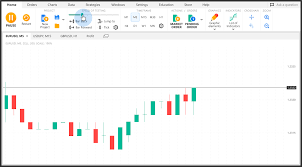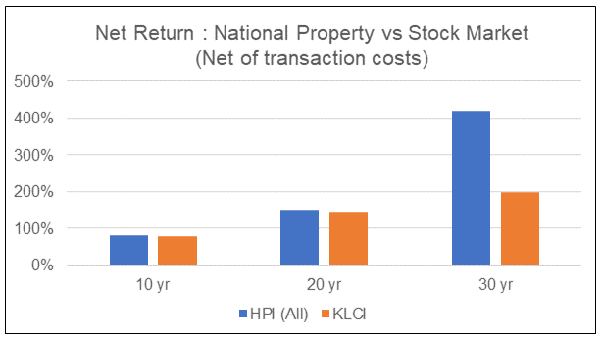
Perhaps you are wondering how to analyse stocks. This article will cover fundamental, technical, quantitative and qualitative methods. It is important to be familiarized with terms and methods when learning how to analyse stocks. You can't understand stock prices if you don't know how to read charts. Continue reading for more information. These are some helpful tips. Below are some fundamental terms and methods for analysing stocks. Once you have these terms down, you will be able to use them to evaluate the health of the stock exchange.
Fundamental analysis
The principal objective of fundamental analysis, using financial ratios and historical data, is to determine the company's worth. This analysis can then be used to predict future growth, stability, investment potential, and future profits. The analysis uses quantitative data, eliminating the possibility of personal opinion. Many traders lack the ability to accurately predict prices on a discretionary basis and so objectivity is essential. Fundamental analysis also enables future traders to predict certain variables.
Although fundamental analysis may seem complex, it offers many advantages. It can be used correctly to identify the true value of a stock and help you avoid making market mistakes. An investor can protect himself from stock market fluctuations by purchasing a company on the basis of its intrinsic value. But fundamental analysis is a complicated process, and even the most diligent and independent investors will doubt its validity. These guidelines will help you get on the right path.

Technical analysis
Technical analysis on stocks is a method of technical analysis that assumes current prices reflect all available information. Prices, however, reflect human emotion and pervasive mass psychology, despite being a function of supply and demand. This means that prices can be affected by expectations and other variables. This emotional factor is ignored by a "technician", who trades based on the chart patterns of a company.
Charles Dow, the inventor of the Dow Jones Industrial Average, is responsible for technical analysis. This system was used to explain market direction and events. This system is used by several other financial analysts to analyze markets and make their money. Charles Dow is the one who introduced technical analysis to mainstream finance. Today's technical analysis relies on the Dow Jones Industrial Average. A fundamental approach may not be right for you if you are a novice investor.
Quantitative analysis
Quantitative analysis, also known as the "Q-factor" in the stock market, is a method to determine the stock's worth by looking at the financial statements. The answer to this question can help investors determine which stocks are worth investing in and which aren't. The answers investors seek are related to company industry structure, incomes and expenses, as well assets and liabilities.
To perform a quantitative analysis, you must be able to analyze vast quantities of data. Quantitative analysts must identify patterns in data to make investment decisions. There is no formula or indicator that guarantees success. The strength of the fundamentals should determine whether a stock's prices rise or fall. Moreover, quantitative analysis must be able to identify the factors that have driven past and future success, such as the size of the company's market cap.

Qualitative analysis
In addition to analyzing a company's financial statements, qualitative analysis of stocks can also help investors determine which companies offer better returns than others. Companies that operate in various industries are typically better candidates for qualitative analysis. But, theoretical considerations may not always line up with reality. These tips will help you make the right investment decision. Let's look at the differences between qualitative and quantitative analysis.
Fundamental analysis is a good starting point, and it involves analyzing three broad spheres: business, personal, and financial. It also includes the understanding of company specific factors such as management and financial position. You may also find additional documents that can help to enrich the data. For qualitative analysis to be more effective, you should consider qualitative factors such corporate governance practices and ethics. It is also important to evaluate the consistency of a company's business strategies.
FAQ
What is security?
Security is an asset that generates income for its owner. Shares in companies are the most popular type of security.
A company could issue bonds, preferred stocks or common stocks.
The earnings per shares (EPS) or dividends paid by a company affect the value of a stock.
When you buy a share, you own part of the business and have a claim on future profits. If the company pays you a dividend, it will pay you money.
You can sell shares at any moment.
How does Inflation affect the Stock Market?
Inflation is a factor that affects the stock market. Investors need to pay less annually for goods and services. As prices rise, stocks fall. This is why it's important to buy shares at a discount.
How are Share Prices Set?
Investors are seeking a return of their investment and set the share prices. They want to make profits from the company. So they purchase shares at a set price. The investor will make more profit if shares go up. The investor loses money if the share prices fall.
Investors are motivated to make as much as possible. They invest in companies to achieve this goal. This allows them to make a lot of money.
Statistics
- US resident who opens a new IBKR Pro individual or joint account receives a 0.25% rate reduction on margin loans. (nerdwallet.com)
- Even if you find talent for trading stocks, allocating more than 10% of your portfolio to an individual stock can expose your savings to too much volatility. (nerdwallet.com)
- Ratchet down that 10% if you don't yet have a healthy emergency fund and 10% to 15% of your income funneled into a retirement savings account. (nerdwallet.com)
- The S&P 500 has grown about 10.5% per year since its establishment in the 1920s. (investopedia.com)
External Links
How To
How to Trade in Stock Market
Stock trading refers to the act of buying and selling stocks or bonds, commodities, currencies, derivatives, and other securities. Trading is French for traiteur, which means that someone buys and then sells. Traders buy and sell securities in order to make money through the difference between what they pay and what they receive. This type of investment is the oldest.
There are many methods to invest in stock markets. There are three main types of investing: active, passive, and hybrid. Passive investors do nothing except watch their investments grow while actively traded investors try to pick winning companies and profit from them. Hybrid investor combine these two approaches.
Index funds that track broad indexes such as the Dow Jones Industrial Average or S&P 500 are passive investments. This type of investing is very popular as it allows you the opportunity to reap the benefits and not have to worry about the risks. You can just relax and let your investments do the work.
Active investing is the act of picking companies to invest in and then analyzing their performance. Active investors look at earnings growth, return-on-equity, debt ratios P/E ratios cash flow, book price, dividend payout, management team, history of share prices, etc. Then they decide whether to purchase shares in the company or not. If they believe that the company has a low value, they will invest in shares to increase the price. If they feel the company is undervalued, they'll wait for the price to drop before buying stock.
Hybrid investing combines some aspects of both passive and active investing. A fund may track many stocks. However, you may also choose to invest in several companies. In this case, you would put part of your portfolio into a passively managed fund and another part into a collection of actively managed funds.